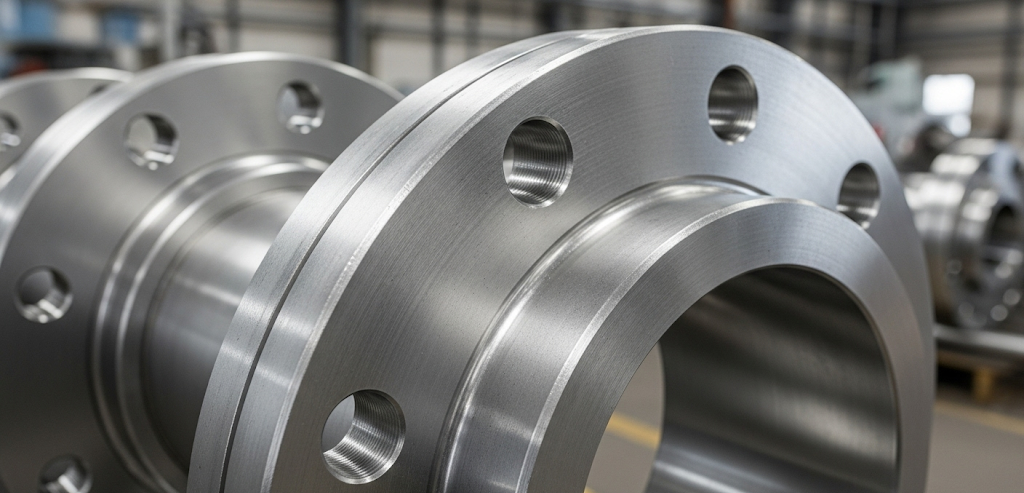Stainless steel flanges are an essential component of numerous industrial and residential pipe systems. They are well-known for their durability, strength, and corrosion resistance. Stainless steel flanges, like any other component, require routine maintenance to ensure long-term performance and durability. Proper maintenance not only extends the flanges’ life, but also improves the system’s overall efficiency.
This blog will go over critical maintenance techniques to help you keep your stainless steel flanges in top shape. By adhering to these rules, you can avoid common issues, lower repair costs, and extend the life of your piping systems.
Understanding Stainless Steel Flanges
Before going into maintenance advice, it’s important to understand what stainless steel flanges are and how they fit into piping systems. Stainless steel flanges link pipes, valves, pumps, and other equipment, ensuring a secure seal and allowing for easy installation and disassembly. They have applications in a variety of industries, including oil and gas, petrochemicals, food processing, and water treatment.
There are several types of stainless steel flanges, including weld neck, slip-on, socket weld, threaded, and blind flanges. Each type is designed for a certain use and pressure rating. Understanding the type of flange you’re working with is critical to proper maintenance and care.
1. Regular Cleaning
Regular cleaning is one of the most critical maintenance procedures for stainless steel flanges. Dirt, debris, and pollutants can build up on flange surfaces over time, causing corrosion and impaired performance.
Use Mild Detergents: When cleaning stainless steel flanges, use mild detergents or stainless steel-specific cleaning solutions. Avoid using aggressive chemicals that may harm the protective oxide layer.
Avoid Abrasive Materials: Clean the flanges with gentle brushes or rags, and avoid abrasive products that may harm the surface. Scratches might be possible corrosion sites.
Rinse Thoroughly: After washing, carefully rinse the flanges with clean water to remove any residual cleaning agents. This avoids chemical accumulation, which can contribute to corrosion.
Regular cleaning improves the appearance of stainless steel flanges, protects them from corrosion, and assures their peak function.
2. Inspection for Corrosion and Damage
Identifying corrosion, damage, or wear symptoms on stainless steel flanges requires regular inspection. Early detection of these issues can help to avoid larger difficulties in the future.
Check for Rust and Discoloration: Even though stainless steel flanges are resistant to corrosion, they can rust under specific situations. Look for signs of rust or discoloration on the flange surfaces.
Inspect Seals and Gaskets: Inspect the seals and gaskets for wear and tear. Leaks can occur as a result of damaged seals, compromising the flange connection’s integrity.
Examine Bolt Tightness: Make that the bolts and nuts that secure the flanges are snug. Loose bolts can cause leaks and misalignment of the pipes.
Regular inspections allow you to solve possible problems before they worsen, maintaining the dependability and safety of your plumbing systems.
3. Lubrication of Bolts and Joints
Proper lubrication of bolts and joints is critical for smooth operation and preventing galling, a condition in which metal surfaces stick to one another owing to friction.
Use Anti-Seize Lubricants: Apply anti-seize lubricants to bolts and threads to avoid galling and make disassembly easier during maintenance.
Avoid Over-Lubrication: While lubrication is necessary, excessive lubrication can attract dirt and debris, causing higher wear. Apply lubricant sparingly and wipe away any excess.
Lubrication is crucial for the integrity and performance of stainless steel flanges, especially in high-temperature and high-pressure environments.
4. Monitor Environmental Conditions
The operating conditions for stainless steel flanges can have a considerable impact on their performance and longevity. Monitoring and regulating environmental conditions can help to avoid corrosion and other problems.
Control Temperature and Humidity: Extreme temperatures and high humidity can accelerate corrosion. Maintain stable environmental conditions to minimize stress on the flanges.
Protect from Chemical Exposure: If the flanges are exposed to corrosive chemicals, consider utilizing protective coatings or barriers to prevent direct contact.
Regularly Assess Environmental Changes: Periodically evaluate changes in the operational environment that may influence the flanges, such as new chemicals put into the system.
Understanding the precise environmental conditions that affect your stainless steel flanges might help you apply protective measures to increase their longevity.
5. Scheduled Maintenance and Replacement
A periodic maintenance program ensures that stainless steel flanges are regularly inspected, cleaned, and repaired. Knowing when to replace worn-out components is critical to maintaining system integrity.
Set a Maintenance Schedule: Create a maintenance schedule based on the manufacturer’s recommendations and the specific requirements of your application.
Replace Worn Components: If an inspection reveals considerable wear or damage, replace the affected components immediately to avoid system failure.
Document Maintenance Activities: Keep meticulous records of all maintenance activities, including as inspections, repairs, and replacements. This documentation can assist identify trends and plan for future maintenance work.
A proactive approach to maintenance increases the life of stainless steel flanges and improves the overall safety and efficiency of your piping system.
Conclusion
Stainless steel flanges are valuable components that require regular maintenance to work well. Regular cleaning, inspections, lubrication, environmental monitoring, and periodic maintenance can help your stainless steel flanges last longer and perform better.
Follow these maintenance guidelines to extend the life of your stainless steel flanges, avoid costly repairs, and maintain the best performance of your piping systems. Remember, a little maintenance can go a long way toward protecting the integrity and efficiency of your equipment.


